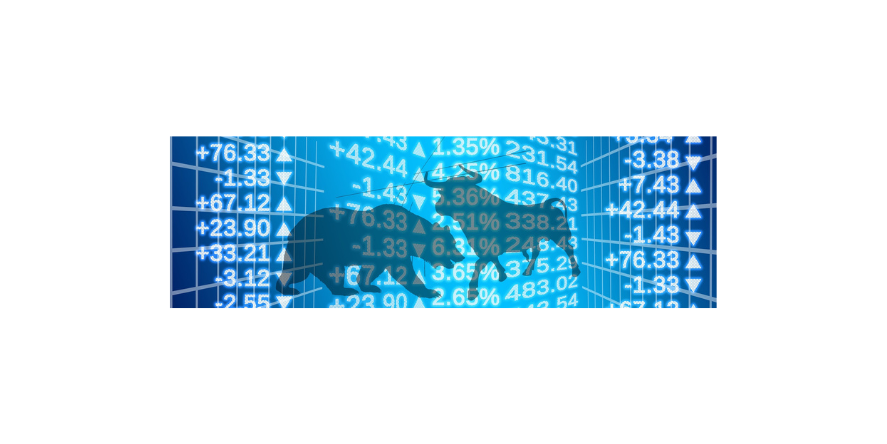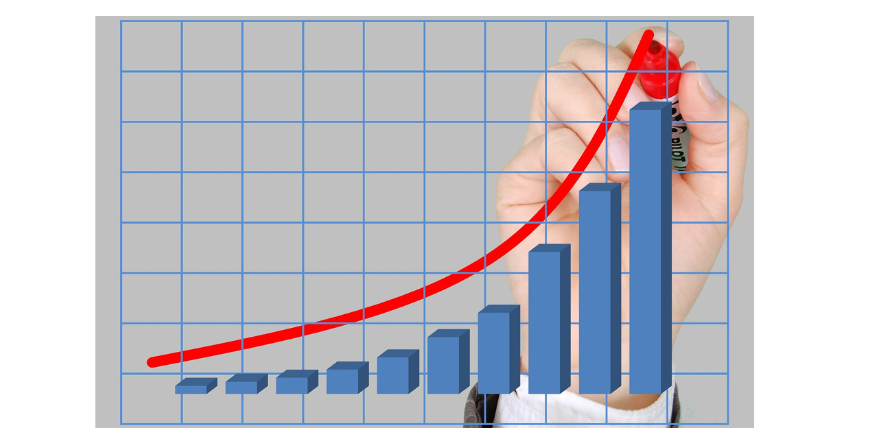One thing’s for sure, no one knows for sure what’s going to happen next.
This may sound obvious, but it’s surprisingly hard for economists, especially those who are often lecturing publicly. I enjoy the thrill and attention that comes from bold predictions. And when I’m on media, I feel pressure to be authoritative. This pressure and perhaps a little ego leads me to speak with more confidence than perhaps I feel.
But as hard as it is for analysts to admit fallibility, it’s even more difficult for investment managers to admit any uncertainty. After all, investors have entrusted millions, even billions, to their investment manager; how could they not see into the future with clarity? Clients’ loyalty are fickle and many clients prefer confident managers over MBA professors who champion risk diversification. The misplaced trust in overconfident investment pros is harmful in the long run because let’s be honest, even the best of us get it right only slightly more often than a random coin toss.
Luckily, that’s all it takes to be successful. As an investment manager, if I can be right 55-60% of the time in each of my macro and micro predictions, I will be one of the best portfolio managers over time!
I am sharing these opening remarks primarily because I am about to make a few forecasts and I want my followers to have proper context to consider my and other experts’ prognostications. While I hope my commentary is helpful and even accurate, I also want you to understand that not even the most informed market pundits know for sure what will happen next and that certainly includes me.
Forecast 1: Wealthy Americans Will Remain the Overall Winners
It’s a well-known fact that asset owners were the big winners of US government spending over the past five years. The cheap capital provided by quantitative easing and near-zero interest rates lifted asset prices across the board; real estate and equity prices rose especially fast. Many of my readers saw their portfolios and home valuations skyrocket over the past few years despite little changes to the underlying fundamentals of their assets.
The wealth effect from QE has been most pronounced among the top 10% of US residents (and especially the top 1%), who benefitted from nearly a $45T increase in aggregate wealth and about $2.5M increase in wealth for the average top 1% household. This dwarfed the $4.5T of money printed by the U.S. government during roughly the same period. While I do predict short-term declines in asset values (see Prediction 2), I also predict wealthier Americans will remain the big winners over time. This is because, although the benefits of US government spending have accrued primarily to the top-10%, the cost of paying for it (inflation) will be distributed nationally.
So, if you are an asset owner, take heart! Yes, you might expect some pain in the coming months (and perhaps years). But on average, you will remain the big winner. You’ve had the good fortune of being the primary beneficiary of 5+ years of government-funded QE … and even better for you, it’s likely to happen again (see Prediction 6).
Forecast 2: Fed Rate Hikes and Quantitative Tightening Will Continue to Depress Asset Prices Even if Long Rates Stabilize
This prediction may be my most confident: asset prices will decline as rates increase. Yes, the long rate has priced in many of the upcoming rate hikes. It has even now factored in the possibility of an ultra-aggressive 100bps hike. In phase 1 of the bludgeoning, asset prices have fallen drastically due to the automatic inverse relationship between discount rates and prices. The higher the rates, the lower the fair valuation multiples.
You should not protest this too much. What the Fed gave, it is now seeking to take away. It does force us into a bit of uncomfortable self-honesty. There may have been some cool innovations over the past few years, even some genuine disruptions. But by and large, we had free money raining on Crypto Bros and their Messiahs who then took credit for the liquidity driven asset inflation.
Those of you who have experienced a positive wealth effect over the past few years will now experience a negative wealth effect. Sure, it’ll hurt for a little while; but don’t forget this short-term decline is coming from a historic high valuation for all risk assets. When it is all said and done, you will still have earned a decent risk premium for holding risk assets in the last five years.
We are now beginning phase two of a bear market. Investors are starting to realize they might have been in a bubble and have invested based on irrational expectations regarding disruption and future cash flow growth. Even without the long rate ticking up much further, market sentiment will continue to run its course, shifting from irrational optimism to incorrigible pessimism. With so much of short-term asset pricing dominated by sentiment instead of company and macro fundamentals, a shift in risk appetite toward risk off, driven by the aggressive rate hike and the subsequent asset price decline, will continue to batter risk assets well beyond the impact of higher cost of capital.
Forecast 3: Rate Hikes Will Do Nothing to Halt Inflation
Unfortunately, rate hikes will do little to slow historic inflation. The Fed simply holds no sway over the war in Ukraine, which is causing high energy and food prices, and over the Chinese Covid policy, which is creating supply chain disruption. Unfortunately, the Fed, or more accurately the current administration, will persist on this path of least resistance but ultimately a path of suspect efficacy. A poll at a recent event with several hundred commercial bankers and advisers; nearly 90% of the room predicted inflation would rocket past 10% before showing any signs of slowing. I’m skewed towards their consensus.
What this will mean is that the market will, at some point in the near future, reach the uncomfortable conclusion that the Fed has lost control of inflation! (Of course, the real question is whether the Fed ever had any actual control of cost-push inflation in the first place). In the meantime, the demand destruction coming from wealth destruction and soon job destruction—a strategy that cuts our nose to spite our face – will only gradually have an impact on inflation. Unfortunately, that impact won’t be soon enough for the digital age nor soon enough for the Dems to keep the House and Senate.
Forecast 4: Stagflation is Unavoidable, I Don’t Believe in the Fed’s Soft Landing Talk
Stagflation is more than a scary word that captures eyeballs and social media likes. The truth is that stagflation is unavoidable. While the Fed would like to sell a message of threading the needle to a soft landing that is more a public announcement to avoid panic than what is realistically possible.
While the Fed can’t reduce the impact of energy, food and supply chain disruption, it can reduce demand. Soft landing is when people voluntarily delay consumption because the higher interest rates encourage people to save. Unfortunately, that’s not in the cards. That’s never been how US consumers work. Instead, the only way to really reduce demand and create an inventory glut to ease off price escalation driven by increases in production and logistics costs is to crater income. That means pushing the cost of capital so high and making liquidity so dear as to stop firms from investing in projects or even cutting projects altogether thus reducing employment.
There is no threading the needle to avoid a recession. The whole strategy is to use a recession to cool off inflation. Imagining otherwise would suggest a poor understanding of the mechanism for containing inflation through demand destruction. And insofar that the headlines and markets still hold out hope for a soft landing, they are likely to be rudely surprised.
Forecast 5: Recession Will Be Worse Than Day Traders Think
As asset prices decline, many readers may be tempted to start buying. But be patient. Many investors – particularly day traders and non-professionals – have limited experience investing during recessions. That’s not their fault; they simply weren’t investing during the tech bubble or the GFC.
Many of today’s investors are anchored to the -30% 2020 COVID crash that lasted three months before producing 100% rebound performance. Or the BTC crash that was followed by 10x performance. To these investors, the 2022 bear market might feel like another chance to aggressively double down with leverage to double one’s wealth. We are prisoners to our own experience. When that experience isn’t relevant to the situation at hand, that experience might do more harm than good.
The nature of our current recession makes it look more like the 2001 tech bubble crash. That crash lasted 30 months and wiped out 78% from NASDAQ. I predict the current market downturn will be more severe and prolonged than many investors may think.
Forecast 6: The Second Shoe Has Yet to Fall
I’ve spent much of my career explaining why “timing the market” is generally a futile exercise. No person has ever been able to time the market effectively. However, we can take some guidance from the academic literature and past experience to make informed buying decisions. We may not time the bottom of the market; but we can feel good about making sensible buying decisions based on quality data. Like the saying goes: it is far easier to buy at the right price than at the right time.
So, what might prudent buyers look at to inform their buying decisions during the current recession?
One of the most common measures of a company’s value is its price-to-earnings ratio (P/E ratio). We are already seeing prices drop, but remember, that is just the other side of the “rate hike” equation. When discount rates rise, P/E ratios contract and prices fall. However, that is just one part of the equation.
We haven’t seen that next shoe fall yet. In a recession, especially one that follows a speculative bubble economy with mass over-investment, the decline in earnings can be precipitous. This means prices must fall more before P/E contracts back toward normality. I predict that once we start to see earnings decline, it will signal the most difficult part of the recession – but it will also be the period during which the best tactical buying opportunities will emerge. Investors will finally be able to buy stocks at “value” prices!
Forecast 7: Quantitative Easing Will Return
Rate cuts will do little to contain inflation, and blame will fall on the current administration. Moreover, the timing is such that the next administration will take office at the time when things have bottomed and the worst, in terms of inflation and working through the excesses of the previous bubble, is behind us. We will again be focused on unemployment instead of inflation! What action will that next administration take?
Based on past experience, the new administration is likely to reverse the course of Quantitative Tightening that has cratered asset prices and forced the economy into a recession, even if that weight loss program is very much needed after five years of binge eating driven by free money. I predict rates will reverse course, and we will enter a new period of quantitative easing and with it another round of P/E expansion. And as before, I predict the benefits of this new period of QE will accrue largely to asset owners. So, just try to survive the current Quantitative Tightening. Keep your gun powder dry. And if you can do that, another Fed-driven market rally is in your future.
Conclusion: Get Your Free Lunch
Having provided my forecast above, investors may naturally ask, “What should I do?”
Well, let me end this article where I started, which is to acknowledge that no one actually knows what will happen. In this article, I’ve made some sensible, educated and, if you would allow me, well-informed predictions. But all seven of my forecasts could be wrong.
Firstly, don’t be reactionary, don’t make knee-jerk panic selling decisions out of fear or get lured into a sucker rally out of greed. Recognize that whatever your views may be and however well-reasoned and well-researched they might be, the market can disagree with you and stay stupid longer than you can stay solvent. So, always be more diversified than you would like.
Remember that in investing, you have only two options: lose money fast, or compound returns slowly. Diversification remains the only free lunch in investing, and it has always been (and is likely to remain) the best way to successfully weather turbulent markets and capture juicy opportunities. Take care.

Blog Article by Geoffrey Muns
Geoffrey Muns is an Independent Financial Advisor and Planner certified from the UK, US and UAE based out of Dubai for the past 20 years. He also works in the PE/VC space and is a seasoned investment banker having worked with international banks and investment firms in the region.
You may contact him at 1mgicapital@gmail.com










